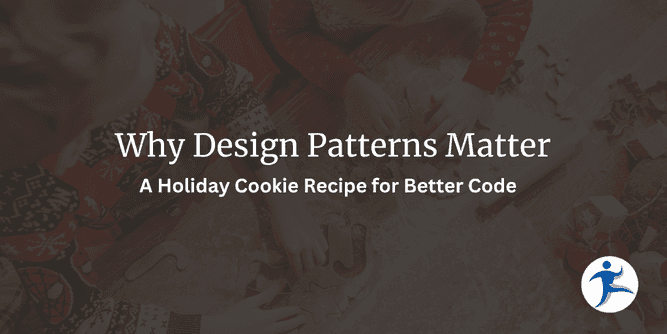This post is part of the Festive Tech Calendar 2024 adventures.
Just as holiday cookie recipes give you tried-and-true methods for festive treats, design patterns provide proven solutions to common coding challenges. In this post, we’ll explore why design patterns are valuable in software development by comparing them to holiday cookie recipes. From creational patterns that help us set up ingredients to structural patterns that shape our dough, each pattern plays a role in producing reliable, scalable code. If you’ve ever followed a recipe to make the perfect holiday cookies, you’re already familiar with the benefits of design patterns!
The Cookie Cutter - Factory Pattern
In holiday baking, you might use various cookie cutters for different shapes, but the base dough remains the same. Similarly, the Factory Pattern lets you create objects with a common interface but different implementations. For example, a CookieFactory could produce GingerbreadPerson or Snowflake cookies by swapping out the cutter, just as you’d create different objects by choosing a subclass.
Learn more about factory patterns:
The Mixing Bowl - Singleton Pattern
Every baker has that one trusty mixing bowl they use repeatedly. In software, the Singleton Pattern ensures only one instance of an object is created, like using just one bowl to mix all ingredients rather than creating a new bowl each time. It’s perfect for things like configuration settings or logging.
The Cookie Assembly Line - Builder Pattern
Building a complex cookie—like those intricately decorated sugar cookies—requires adding elements step-by-step (dough, icing, sprinkles). The Builder Pattern works similarly by constructing an object piece by piece. For example, a CookieBuilder could add ingredients and decorations step-by-step until the cookie is ready.
Cookie Decorations - Decorator Pattern
Just as you might add frosting, sprinkles, or glaze to cookies, the Decorator Pattern adds new behaviors or properties to objects without modifying their structure. A Cookie could be decorated with various add-ons, each layering new functionality (e.g., FrostedCookie, SprinkledCookie), much like decorating each cookie for extra appeal.
The Baking Timer - Observer Pattern
When baking holiday cookies, multiple tasks might depend on the timer (e.g., rotating trays, preparing icing). The Observer Pattern allows an object (the timer) to notify dependent objects of an event. In code, the timer could broadcast when the cookies are done, and various observers like IcingPreparer and CoolingRack could respond.
The Cookie Recipe - Template Method
Recipes provide a template of steps (mix, bake, decorate), with some steps left customizable. The Template Method pattern defines a sequence of steps, allowing subclasses to alter specific steps without changing the structure. In a HolidayCookieRecipe template, you might have fixed steps for mixing and baking but leave decorations up to each specific cookie type.
Dough Prepartion Techniques - Strategy Pattern
Different cookies require different mixing or baking techniques (folding, whisking, chilling). The Strategy Pattern lets you select an algorithm at runtime, like choosing a MixingStrategy (stir, fold, or blend) based on the cookie type. In software development, you might pass different strategies to a CookieMaker class to adapt the dough preparation.
Conclusion
Just as a recipe can make baking easier and more consistent, design patterns offer reusable solutions that make software more predictable, maintainable, and adaptable. By baking with design patterns, developers ensure that code, much like cookies, turns out consistently every time!







